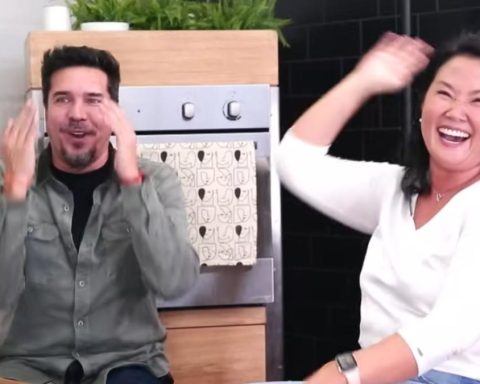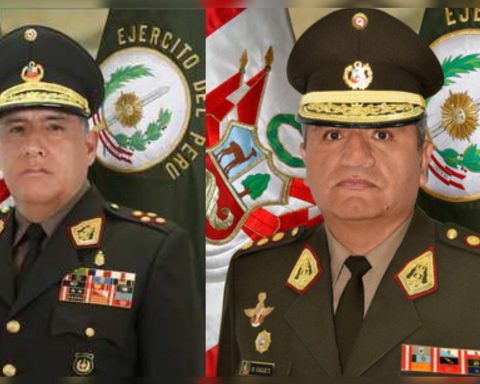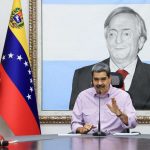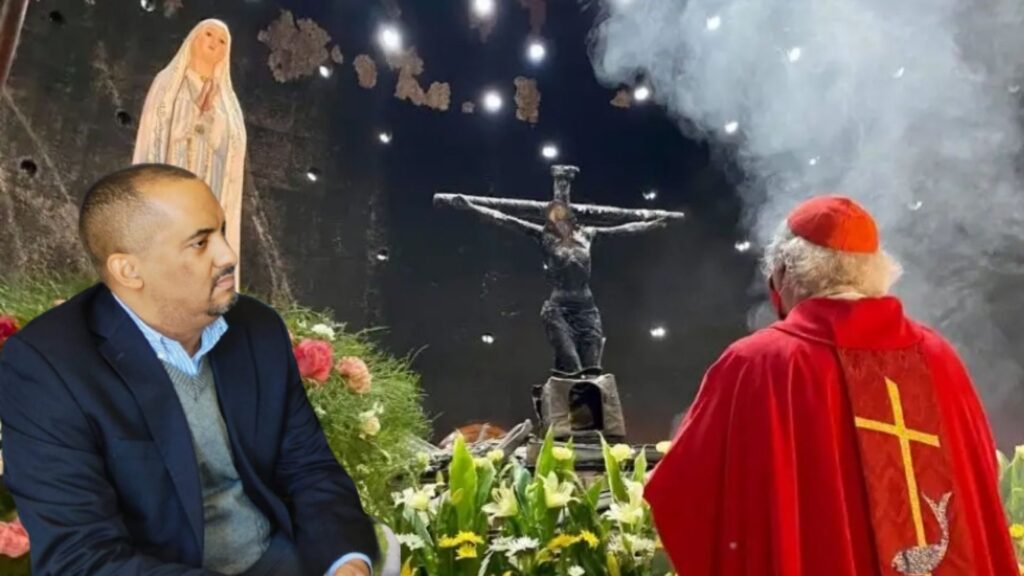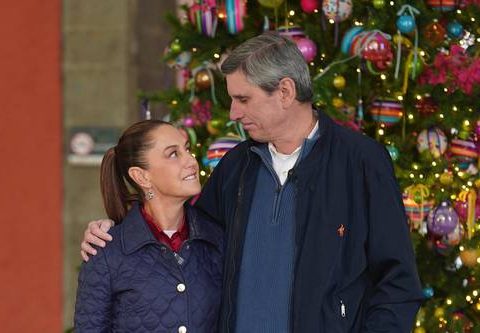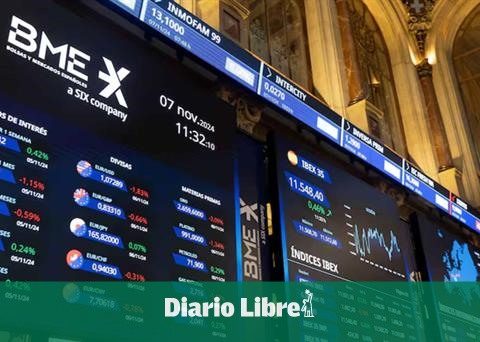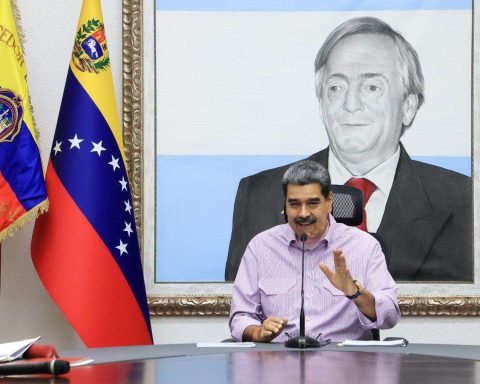The strike of cargo carriers and farmers will be two weeks old, and during Tuesday, April 5 and Wednesday, April 6, the most critical moments were experienced in Metropolitan Lima and Ica with protests against the government of President Pedro Castillo while on the seventh day in Huancayo a dialogue table was installed that was headed by the head of state.
Shortages and the lack of some basic products were no longer the main problems in recent days, but the roadblocks, clashes with the police and looting, that until now have been leaving several arrested, wounded and at least five dead.
National stoppage in all modes of transport
On Monday 4 dozens of passengers and drivers in Lima and other regions were affected by the national strike announced by Geovani Diez Villegaspresident of the Union of Multimodal Transport Guilds of Peru (UGTRANM), who called last week for no transportation service public transport, tourist, taxis and even motorcycle taxis I would go to work that day.
The justification for the measure, according to Díaz Villegas, promoter of the collective taxi– was based on statements by the president peter castle – “Some leaders and ringleaders have been paid” – which mobilized hundreds of people in Huancayo. However, last weekend the head of state had already apologized for his expressions and also after the signing of minutes between the Government, transporters and farmers, the strike was lifted for five days (until Thursday 7) in the aforementioned city of the region Junin.
In the capital, on that day of the national protest, the seizure of a section of the central highway in Lima, clashes with the police in Santa Clara, attacks on carriers who did not abide by the strike in Manchay, burning of tires in Vía Avoidance, the destruction of a toll booth in Casaracra (Yauli) and the blockade on the way to Piura, Amazonas, San Martin, Ica and Ucayali.
It was also reported the looting of two minimarkets of two taps in Ica. The establishments were located in the district of Subtanjalla and at Km 301 of the Panamericana Sur.
In addition, the Regional Directorate of Education of Lima Provinces and the Regional Directorate of Education of Metropolitan Lima (Drelm) reported that the face-to-face school classes were suspended in state and private schools.
The Presidency of the Council of Ministers (PCM) informed on Monday night that an agreement had been reached with the Federation of Collective Cars of Peru to call off the protest. wincler slimnational spokesperson for that union, said that the Government promised to publish the regulations on the formalization of collective taxis.
This standard was published on the night of Tuesday, April 5, and is regional, provincial and interdistrict character and “does not apply to Lima and Callao”.
:quality(75)/cloudfront-us-east-1.images.arcpublishing.com/elcomercio/T4FTZZ5WNRDY7G6X5LAKMZXF6A.jpg)
April 5: curfew, massive protest, looting and violence
The situation that still had no sign of ending escalated when the government of peter castle issued the order of compulsory social immobilization (curfew) in Lima and Callao in the last hours of Monday to be applied on Tuesday 5, which exacerbated the political and social crisis. The response to the measure was mass march of citizens towards Congress and against the head of state, but which culminated in looting and damage to private property in the center of the capital at the hands of vandals.
:quality(75)/cloudfront-us-east-1.images.arcpublishing.com/elcomercio/444O4UILRJCXFHHUIJY4EJKKPQ.jpeg)
In the afternoon, the president peter castlereported during a meeting with the Board of Spokespersons of Congress that the Government would back down with the social immobilizationbut the measure was not effective because it only expired at 11:59 p.m.
Meanwhile, a group of hooligans took advantage of the demonstrations that took place against the Government of peter castle at Lima’s center for cause damage in different parts of the capital. Both public and private property was severely affected.
:quality(75)/cloudfront-us-east-1.images.arcpublishing.com/elcomercio/N2YK26T7RJBFJCPGNM5Y7AZSNY.jpeg)
The attacks occurred at the headquarters of the Judiciary, Public Ministry, National Elections Jury, Colmena del Metropolitano station. In addition, they were reported destruction in the Concepción church, two Tambo stores, ATMs and AFP Prima headquarters.
The National Police of Peru (PNP) reported that 18 people were detained during riots on April 5. The subjects will be denounced for the crime against public tranquility.
For his part, the Executive justified the one-day curfew in Lima and Callao noting that there was information on “generalized movements and acts of vandalism” that were going to be perpetrated in the capital.
:quality(75)/cdn.jwplayer.com/v2/media/bYbIRVjA/poster.jpg)
Violence in Ica
The violent clashes recorded on Wednesday, April 6 in the Ica region between the Police and groups of protesters who comply with a strike and block traffic on the highway Pan American South left one person killed and injured between police and civilians.
The deceased identified as Jhony Quinto Contreras, he lost his life in the Urban Expansion zone, at kilometer 290 of the Panamericana Sur, at the entrance to the district of Salas-Guadalupe, province of Ica. It was even reported retention of two NCOs who were later released after a brief truce that allowed the Panamericana Sur to be unblocked for two hours, but then vehicular traffic was again restricted.
The Ica Police Front reported that most of the wounded agents have multiple contusions in various parts of the body and cuts to the head. Nevertheless, one of the police officers has a skull fracture and his diagnosis is reserved.
:quality(75)/cdn.jwplayer.com/v2/media/4vKCUQAG/poster.jpg)
The Minister of the Interior, Alfonso ChavarryI travel to Ica and ordered the transfer of 203 members of the Directorate of Special Operations (Diroes) of the National Police of Peru (PNP) “to restore public order and ensure the integrity of the citizenry.”
For its part, the Public Ministry of Ica reported that, through the criminal prosecutors on duty, it is carrying out urgent proceedings due to the strike of carriers, started on Monday, April 4.
After a meeting of representatives of the Executive with the demonstrators, it was achieved that from Thursday, April 7 and to date the Panamericana Sur is released.
Pedro Castillo arrived in Huancayo
President Pedro Castillo traveled Thursday to Huancayo (Junín), cradle of Peru Libre, to lead a decentralized session of the Council of Ministers, after protests by heavy cargo carriers and farmers. This, after last weekend, on the fifth day of the protests, the situation overflowed and there were clashes with the police, looting and attacks on public and private property.
During his speech at the Wanka Coliseum meeting, the Head of State offered his apologies to the city of Huancayo and to Peru if there has been any misunderstood expression on his part, and he expressed his condolences to the families of those who died during the demonstrations recorded in recent days.
Meanwhile, the President of the Council of Ministers, Hannibal Torresmade a questionable mention of Hitler, which provoked a series of criticisms and reactions from Congress, institutions and other political figures. At another point, the prime minister apologized for saying the police were “not efficient” in handling recent social conflicts.
Among the commitments that the Executive affirmed to fulfill in Huancayo They include: the rules that promote the use of fresh milk in the production of national evaporated milk and restructuring of the Superintendence of Land Transportation of People, Cargo and Merchandise (Sutran). In addition to promoting family farming through the use of island guano and direct purchases from farmers, on the occasion of the Qali Warma National School Feeding Program.
:quality(75)/cloudfront-us-east-1.images.arcpublishing.com/elcomercio/TW5DQXALBBA2FHHZAIRG4FCHIE.jpg)
March of Sutep and CGTP
Dozens of members of the General Confederation of Workers of Peru (CGTP), the Unitary Union of Workers in Education of Peru (Sutep) and other unions this afternoon toured the streets of downtown Lima and regions to demand that the Government increase the minimum wage and comply with Agenda 19, in order to stop the rise in the cost of living, among other demands.
In Arequipa, La Libertad, Cusco, Huancavelica, Junin, Ucayali and Loreto A similar scenario was also experienced, since regional unions went out to march.
Everything went smoothly and no incidents of violence were recorded, as in previous marches this week. The protesters were alert that no unruly person infiltrate the march and cause disturbances.
:quality(75)/cloudfront-us-east-1.images.arcpublishing.com/elcomercio/PCGS27XGVJAV3EMBUGJQKRFTWY.jpeg)
Deceased
So far reported five deceased (3 in Huancayo, one in Huánuco and one in Ica) in the strike of carriers, agricultural workers and other unions.
To the date The deceased in Junín are a 13-year-old teenager, the teacher Candy Magaly Hinostroza de la Cruz, and the citizen Jorge Maldonado Landeo (82). In Huánuco, the death of the young Alexander Trujillo Nolasco (18) was reported, while in Ica, the Police confirmed the death of farmer Jhony Quinto Contreras.
:quality(75)/cloudfront-us-east-1.images.arcpublishing.com/elcomercio/HYEOZQR4PBAFFK6J4YUZHNKC5A.jpg)
RECOMMENDED VIDEO
:quality(75)/cdn.jwplayer.com/v2/media/KQHhcPRS/poster.jpg)
SUBSCRIBE TO YOUTUBE MAIL
:quality(75)/cloudfront-us-east-1.images.arcpublishing.com/elcomercio/KLUJVAD645BHHB2M32MAVU6OAQ.jpeg)

